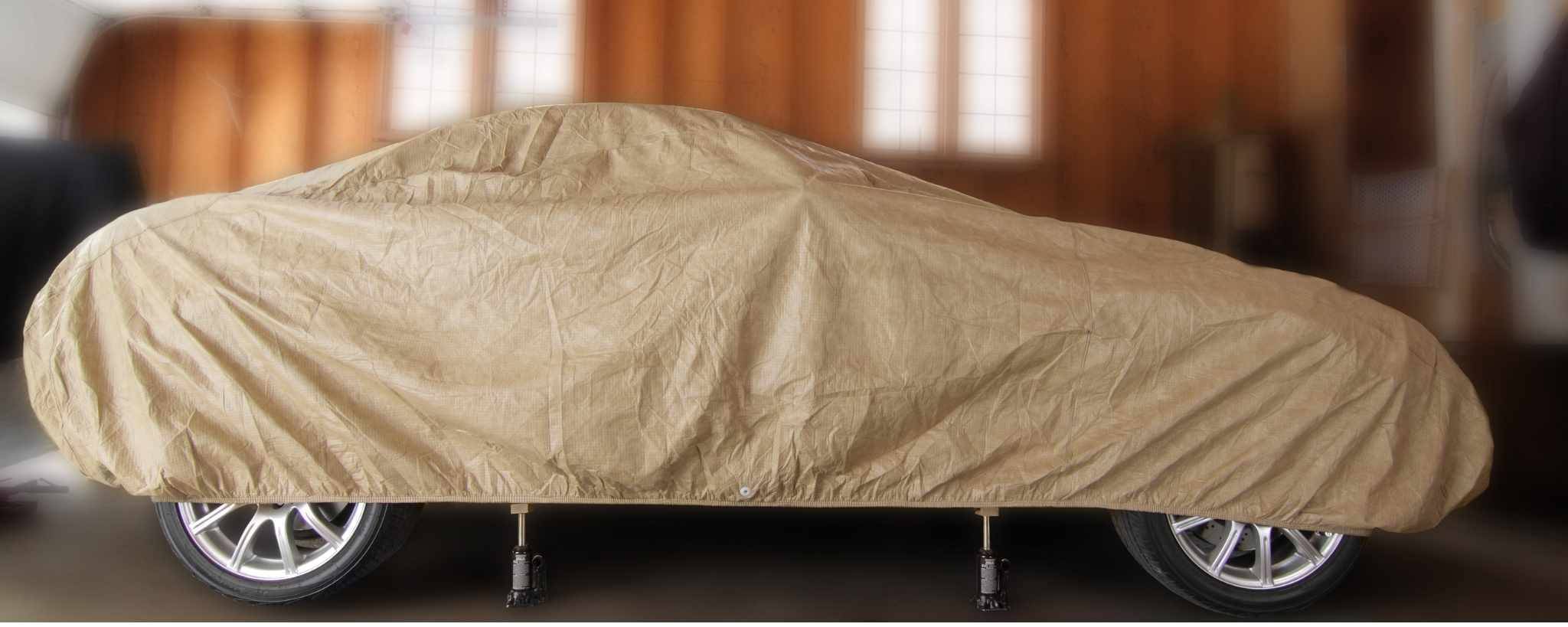Long Term Car Storage: The Ultimate Guide to Storing Your Car for the Long Term
Leaving your car idle for weeks causes flat spots on tires, rust in the fuel tank, and rodent infestations. Prevent these issues with proactive maintenance to ensure your car starts smoothly.

Use AI to summarize this article:
Whether you’re tucking away a classic car for the winter, heading abroad for months, or parking your daily driver during a vacation, preparing your vehicle for long-term storage is important to make sure it isn't damaged. Without proper care, gritty road salt, stale fuel, or even curious mice can wreak havoc, leading to costly repairs.
No matter how long you store your car, be it 3 months or 3 years, this guide will help you to keep your car in top condition.
Step-by-Step Guide to Preparing Your Car for Long-Term Storage
Follow these 12 steps to protect your car during extended inactivity. Each step is designed to address specific risks, from fuel degradation to pest invasions, keeping your car road-ready.
1. Wash and Wax the Exterior
Dirt and bird droppings can etch into the paint, leaving permanent marks. Thoroughly wash the car, including the undercarriage where road salt hides, and apply a wax coating for protection. For extra durability, consider a clay bar treatment to remove embedded grit or a ceramic coating for long-lasting shine.
Related Article: How to Clay Bar a Car
2. Deep-Clean the Interior
A stray chip under the seat can lure mice and ants in the car. Vacuum every crevice, wipe down surfaces, and remove trash to eliminate odors. Sprinkling food-grade diatomaceous earth on carpets creates a barrier that pests avoid, as noted in pest control studies.
Your Guide To Deep Cleaning Car Interior
3. Fill the Fuel Tank with Non-Ethanol Fuel and Stabilizer
A full tank limits air exposure, reducing moisture that causes rust. Use non-ethanol fuel, which resists degradation, and add a fuel stabilizer, such as Sta-Bil, to prevent gum buildup in the fuel system. This keeps the engine running smoothly when you restart it.
4. Change the Oil and Filter
Used oil harbors contaminants that can corrode engine parts. Before storage, replace the oil and filter to ensure clean lubrication, as recommended by Ford’s maintenance guidelines for vehicles idle longer than 30 days. Fresh oil protects internal components from sludge.
5. Coat Engine Cylinders with Fogging Oil
Idle engines risk corrosion in the cylinders. Remove the spark plugs, spray fogging oil into each cylinder to coat the walls, and reinstall the plugs. This step, often used by classic car owners, prevents piston rings from sticking.
6. Top Off All Fluids
Check coolant, brake fluid, transmission fluid, and power steering fluid levels to prevent drying or corrosion. Low fluids can damage seals, leading to leaks when the car is restarted. Use manufacturer-recommended fluids for best results.
7. Maintain the Battery
Batteries lose charge over time, especially in cold weather. Disconnect the negative battery cable to prevent drainage, or connect a battery tender, which delivers a trickle charge to maintain power. This ensures your car starts instantly upon your return.
8. Protect Tires with Jack Stands or Proper Inflation
Tires bearing the car’s weight can develop flat spots, like a tire that’s been pinched too long. Inflate tires to the manufacturer’s recommended PSI, or lift the car onto jack stands to relieve pressure. If stored outdoors, cover tires with UV-resistant bags to shield them from sunlight.
9. Use Wheel Chocks Instead of the Parking Brake
Engaging the parking brake can cause pads to fuse to rotors, especially in humid conditions. Place wheel chocks, sturdy blocks behind the wheels, to keep the car stationary. This simple swap avoids brake repairs later.
10. Block Rodents with Steel Wool and Repellents
Mice can slip through the exhaust pipe or air intake vents, chewing wires or nesting in the engine. Stuff steel wool into these openings and place mothballs or peppermint-soaked cotton balls around the car. These deterrents, backed by rodent control research, keep pests at bay.
11. Choose the Right Storage Location
A climate-controlled garage shields your car from temperature swings and moisture, ideal for preventing rust. If unavailable, indoor storage facilities cost $100-$500 monthly, while outdoor options start at $50. Lay a tarp beneath the car to block ground moisture.
12. Cover the Car with a Breathable Cover
A breathable car cover protects against dust while allowing air circulation to prevent mold. Ensure the car is clean and dry before covering to avoid trapping moisture. This final layer preserves your paint’s luster.
Post-Storage Checklist: Getting Your Car Road-Ready
Before hitting the road, perform these checks to ensure your car is safe and functional:
- Inspect for Rodent Damage Inside Car: Look under the hood for chewed wires, nests, or droppings.
- Clear Blockages: Remove any material from the exhaust pipe or air intake.
- Reconnect the Battery: Test the battery’s charge and clean terminals if needed.
- Check Fluid Levels: Verify oil, coolant, and other fluids, watching for leaks.
- Examine Tires: Ensure proper inflation and check for flat spots or cracks.
- Test Brakes: Drive slowly to remove light rotor rust; inspect if braking feels off.
- Wash the Car: Remove dust or debris to restore the paint’s shine.
Professional Detailing After Long-Term Storage
Even in a garage, dust settles, and musty odors cling to upholstery. A professional detailing service can help you remove stubborn grime and refresh the interiors, restoring your car’s showroom glow. After months of stillness, this step ensures your vehicle looks and feels as good as new.
Frequently Asked Questions
How long can a car sit without being driven?
A car can sit for about a month without major issues. Beyond that, risks like battery drain, fuel degradation, and tire flat spots increase without preparation. Proper storage mitigates these concerns.
Should you change the oil before storing a car?
Yes, for storage of a car over 30 days, fresh oil prevents contaminants from harming the engine. A new filter also reduces sludge buildup.
How often should someone check a stored car?
Check every 4-6 weeks to monitor tire pressure, battery charge, and pest activity. If possible, have someone start and drive it briefly every two weeks.
How do I prevent rust during long-term car storage?
Store your car in a dry, climate-controlled space, fill the fuel tank, and use a tarp to block ground moisture. These steps reduce rust on the undercarriage and fuel system.

Parham Koukia
Lead Car Detailer / Operations Manager
With nearly 15 years of hands-on detailing experience, Parham has become a trusted authority in the auto care world. His work is regularly spotlighted in leading outlets like CNN, GoBankingRates, and Family Handyman. Parham likes to share his knowledge to offer in-depth tips on equipment selections, seasonal car care, and some secret car cleaning tips used by detailers in the real world!
Read more
